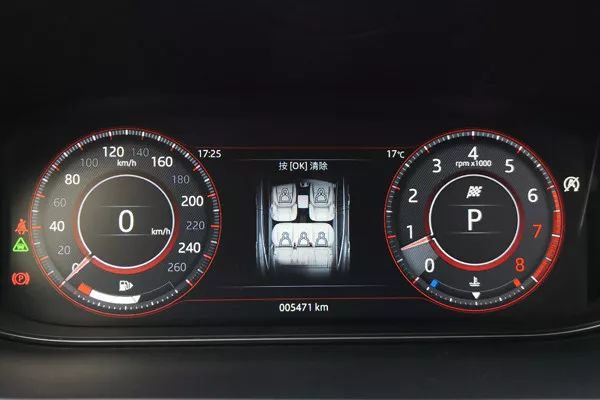According to different statistical calibers, there are no less than 60,000 RV camps in Europe, North America, Australia, New Zealand, Japan, South Korea and other developed and more developed regions, of which there are at least 30,000 in Europe alone RV camps, and there are more than 20,000 camps in the United States, so how are so many camps classified? What are the characteristics of each category? What are the site selection principles and infrastructure for each type of camp? These are necessary for many investors in the rapidly developing camp industry in our country to understand.
1. Classification of campsites:
(1) Classification according to service objects
Car camps can be divided into self-driving camps and RV camps according to the main service objects. As an investor, the first thing you need to know is what kind of customer group your investment camp serves. My personal suggestion, although the current domestic RV The number of holdings is growing rapidly, but overall the number of holdings is still low. In the construction of camps, it is best to use a dynamic idea to build. The customer base should be mainly self-driving tourists, and RVs are Auxiliary, in the future, as the number of RVs increases, the proportion of RV camps will gradually increase. This is a dynamic idea. The following classification is a very simple classification method:
1. Self-driving camp: Refers to self-driving tour routes, relying on tourist traffic lines and scenic spots or near tourist attractions, with certain venues and facilities, which can provide self-driving or semi-self-service for self-driving enthusiasts It is a tourist site with a specific theme and complex functions, and its main service items include accommodation, camping, off-roading, leisure, catering, entertainment, car maintenance and maintenance, car rental, vacation, outdoor sports, information services, medical treatment and rescue, etc.
2. RV camps: RVs are mobile homes, and RV camps are the docking points for mobile homes. Due to the limited number of RVs in China, RV camps cannot be supported by RVs alone, and some self-driving camps and related services should also be equipped .
3. Tent camp: It mainly serves tourists and backpackers who walk, bike, etc., and can provide tents and related facilities.
![[Industry] Camp construction investors are fans of onlookers](https://img.ucar.run/ecar/32600.jpg)
(2) Classification according to the resources that the camp relies on
According to the type of resources in the selected site, car camps with different characteristics can be built. Internationally, they are mainly divided into mountain car camps, island car camps, lakeside car camps, seaside car camps, forest car camps, and rural car camps. There are six types, and each car camp will be equipped with related special items.
(3) Classification according to main products
Every car or RV camp should have its own flagship product and a core attraction. Specifically, it can be classified into several types such as film and television entertainment car camps, food and leisure car camps, outdoor sports car camps, and motel car camps.
(4) Classification according to the scope of main functions
Divided into comprehensive camps and post-style camps, comprehensive camps can provide comprehensive service centers, self-driving camps, trailer camps, mobile wooden houses, tent camps, garbage disposal stations, adult amusement facilities, parent-child amusement facilities, leisure Sports and other functions are generally located near densely populated cities or scenic spots, while post camps are generally located along relatively remote roads, and only provide simple functions such as water addition, power supply, garbage disposal, and nutrient supplementation. .
![[Industry] Camp construction investors are fans of onlookers](https://img.ucar.run/ecar/32601.jpg)
(5) Classification according to location and function
According to the location function classification, it can be divided into urban type, suburban type, transit type, scenic area type, vacation type and other camps;
(6) Classification according to star standards
It can be divided into one-star, two-star, three-star, four-star, and five-star camps. What needs to be emphasized here is that countries around the world have different classification standards. Before investing in camps, you must first To find out the different standards, my country’s camp star classification standard has also been launched, it is best to refer to it before investing in construction.
2. Site selection principles and main facilities for camp construction
Then, in the process of camp construction, referring to the construction standards of domestic and international RV camps, combined with the comprehensive status quo of my country’s RV industry, self-driving cars and tourism, the current principles of RV camp construction mainly include the following aspects:
(1) Site selection and infrastructure construction principles
1. Low cost, excellent environment, and low pollution: On the basis of considering the construction quality of the campsite, the optimal solution with low operating cost and less environmental pollution or impact is given priority.
2. Geological and other safe areas: RV camps should be located in locations with stable geological conditions. For example, unsafe areas such as gullies where floods may pass, landslides, strong winds, and wild animals and poisonous insects cannot be selected. Protect the personal safety of tourists participating in camp tours.
3. The RV camp should have a wide view, green trees, rivers, and abundant sunshine: people can carry out sea bathing, fishing, swimming and other activities on the seaside, lakeside, riverside and other places; it must be equipped with water supply and drainage, electrical appliances, communications, etc. The infrastructure related to life is convenient for RV supplies and people’s life; it is best to have swimming pools, tennis courts, racing tracks and other sports facilities or entertainment facilities around for people’s leisure;
![[Industry] Camp construction investors are fans of onlookers](https://img.ucar.run/ecar/32602.jpg)
(2) Basic functional facilities of the caravan camp
1. There are public transportation facilities (cars or trains) around: not all tourists have RVs, especially in the current domestic, the number of RVs is still relatively small, and the penetration rate of self-driving cars is not so high that everyone has a car so that campers without cars can participate in camping activities.
2. Suitable terrain and good drainage: The land for RV camps should be flat or with a small slope and good drainage. It should be well lit, well ventilated, and convenient for vehicles to enter and exit. In summer, there should be appropriate shade and safe places.
3. Environmentally friendly and environmentally friendly construction: During the planning and construction of RV camps, the impact on the environment must be fully considered, materials and equipment that meet the requirements of environmental protection and ecological protection should be used, and environmentally friendly and energy-saving products should be selected. Adopt energy-saving architectural design, structure, and materials in construction projects to improve building thermal insulation and reduce energy consumption. Some auxiliary facilities, materials, and appliances must use renewable or recycled materials, and the pollution-free nature of temporary buildings should also be considered. , recyclable, off-site reuse and enclosure standards and other details. In terms of energy, promote the use of clean energy such as solar energy, geothermal energy, natural gas, coal gas, liquefied petroleum gas, biogas, and electricity to minimize adverse impacts on the environment.
![[Industry] Camp construction investors are fans of onlookers](https://img.ucar.run/ecar/32603.jpg)
Just like star-rated hotels and guest houses, the product line of campsites is very long and there are many types, ranging from the simplest campsites to the most luxurious campsites. But in general, RV camps will have the following facilities: parking spaces for self-driving cars, parking spaces for self-propelled RVs, parking spaces for towed RVs, drinking water supply, lighting and electricity supply, sewage and security services. Of course, RV camps are far more than these, especially comprehensive RV camps should be fully functional tourist resorts that integrate scenic spots, entertainment, life, and services. How to grasp all aspects of investment is my suggestion. Increase the number of customers, set up according to needs, and move according to the times. Don’t be blindly greedy for perfection.




